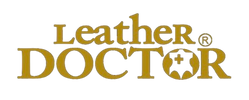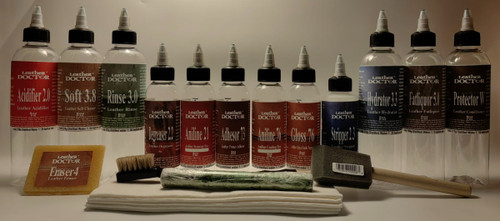 The system works by stripping, degreasing, cleaning, rinsing, hydrating, softening, priming, dyeing, topcoating, and conditioning leather surfaces.
The system works by stripping, degreasing, cleaning, rinsing, hydrating, softening, priming, dyeing, topcoating, and conditioning leather surfaces.
 Why is there a need to re-dye?
Why is there a need to re-dye?
Aniline leather, by its nature, is dyed through and through without an opaque surface coating, making its color vulnerable to:
 UV fading from sunlight exposure.
UV fading from sunlight exposure.
 Abrasion wear from regular use.
Abrasion wear from regular use.
 Staining or uneven discoloration from body oils, grease, and sweat.
Staining or uneven discoloration from body oils, grease, and sweat.
 Previous improper cleaning that may strip dyestuff from the surface.
Previous improper cleaning that may strip dyestuff from the surface.
Re-dyeing restores:
 The depth and richness of color that has faded or worn.
The depth and richness of color that has faded or worn.
 The evenness of appearance, masking blemishes and stains.
The evenness of appearance, masking blemishes and stains.
 The natural aniline character, allowing light to penetrate and reflect through the dye, preserving that signature transparent look unique to aniline leather.
The natural aniline character, allowing light to penetrate and reflect through the dye, preserving that signature transparent look unique to aniline leather.
 Why is the leather structure's integrity not seen as important as appearance?
Why is the leather structure's integrity not seen as important as appearance?
 It’s a common misconception in the leather care industry to prioritize appearance over structure.
It’s a common misconception in the leather care industry to prioritize appearance over structure.
 Many refinishing processes focus on cosmetic results—making the leather look new—while overlooking:
Many refinishing processes focus on cosmetic results—making the leather look new—while overlooking:
 Internal fatliquor content that determines softness, strength, and flexibility.
Internal fatliquor content that determines softness, strength, and flexibility.
 pH balance crucial for preventing deterioration (such as cracking or stiffness).
pH balance crucial for preventing deterioration (such as cracking or stiffness).
 Ionic bonding integrity between leather fibers and their tannins/fatliquor.
Ionic bonding integrity between leather fibers and their tannins/fatliquor.
 Leather Doctor’s position:
Leather Doctor’s position:
 While appearance matters (hence the re-dyeing and gloss topcoat), the integrity of the leather’s structure is fundamental to long-term performance and preservation.
While appearance matters (hence the re-dyeing and gloss topcoat), the integrity of the leather’s structure is fundamental to long-term performance and preservation.
 This is why the Leather Doctor system emphasizes hydrating and fatliquoring alongside refinishing—restoring what the leather needs internally before beautifying it externally.
This is why the Leather Doctor system emphasizes hydrating and fatliquoring alongside refinishing—restoring what the leather needs internally before beautifying it externally.
 Why is a holistic scientific approach emphasized in the Leather Doctor system based on tannery science?
Why is a holistic scientific approach emphasized in the Leather Doctor system based on tannery science?
 Leather Doctor’s system is built on tannery science principles that recognize leather as a living material, even after processing.
Leather Doctor’s system is built on tannery science principles that recognize leather as a living material, even after processing.
 The key reasons for a holistic, scientific approach are:
The key reasons for a holistic, scientific approach are:
 Leather is amphoteric (pH sensitive) — if its pH balance is disturbed (e.g. by sweat, alkaline cleaners), it weakens structurally.
Leather is amphoteric (pH sensitive) — if its pH balance is disturbed (e.g. by sweat, alkaline cleaners), it weakens structurally.
 Fatliquor loss leads to stiffness, cracking, and weakness — merely covering damage with dye ignores the root cause of deterioration.
Fatliquor loss leads to stiffness, cracking, and weakness — merely covering damage with dye ignores the root cause of deterioration.
 True restoration begins at the fiber level — replenishing the original fat, oil, and moisture content as done in the tannery.
True restoration begins at the fiber level — replenishing the original fat, oil, and moisture content as done in the tannery.
 Scientific sequencing ensures compatibility and long-term results — each product prepares the leather for the next step (e.g. cleaning neutralizes pH and residue before softening and refinishing).
Scientific sequencing ensures compatibility and long-term results — each product prepares the leather for the next step (e.g. cleaning neutralizes pH and residue before softening and refinishing).
 This tannery-aligned system ensures leather is not just cosmetically improved, but structurally rejuvenated, preserved, and protected for the future.
This tannery-aligned system ensures leather is not just cosmetically improved, but structurally rejuvenated, preserved, and protected for the future.
 Summary of the 4-Sequence Refinishing Process
Summary of the 4-Sequence Refinishing Process
 Cleaning System (4 products)
Cleaning System (4 products)
 Degreaser 2.2 – Eliminates body oil, grease, sweat.
Degreaser 2.2 – Eliminates body oil, grease, sweat.
 Soft 3.8 – Deep cleans remaining soiling.
Soft 3.8 – Deep cleans remaining soiling.
 Rinse 3.0 – Rinses off degreasing and cleaning residues.
Rinse 3.0 – Rinses off degreasing and cleaning residues.
 Acidifier 2.0 – Balances pH, stabilizes structure.
Acidifier 2.0 – Balances pH, stabilizes structure.
 Hydrating, Stain Dyeing and Softening System (3 products)
Hydrating, Stain Dyeing and Softening System (3 products)
 Hydrator 3.3 – Rehydrates and relaxes leather fibers.
Hydrator 3.3 – Rehydrates and relaxes leather fibers.
 Aniline 21 – Reactivates and enriches natural color.
Aniline 21 – Reactivates and enriches natural color.
 Fatliquor 5.0 – Restores fats and oils for suppleness and tensile strength.
Fatliquor 5.0 – Restores fats and oils for suppleness and tensile strength.
 Priming, Coat Dyeing and Top Coating System (3 products)
Priming, Coat Dyeing and Top Coating System (3 products)
 Adhesor 73 – Primes for adhesion.
Adhesor 73 – Primes for adhesion.
 Aniline 76 – Applies fresh dye for uniform coverage.
Aniline 76 – Applies fresh dye for uniform coverage.
 Gloss 76 – Seals with a durable, vibrant gloss topcoat.
Gloss 76 – Seals with a durable, vibrant gloss topcoat.
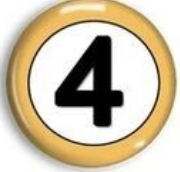 Conditioning System (1 product)
Conditioning System (1 product)
 Protector B – Imparts a buttery feel, resists soiling, reduces friction wear.
Protector B – Imparts a buttery feel, resists soiling, reduces friction wear.
 Key Takeaway
Key Takeaway
 Unlike superficial refinishing approaches, Leather Doctor’s system respects leather’s biochemistry, providing true restoration from within, not just surface beautification.
Unlike superficial refinishing approaches, Leather Doctor’s system respects leather’s biochemistry, providing true restoration from within, not just surface beautification.
 The goal: keep leather both beautiful and structurally sound, as it was meant to be.
The goal: keep leather both beautiful and structurally sound, as it was meant to be.
 Kit A7.cl concentrates contents require 1581g (1.8 quarts) distilled water to be mixed and filled before use with these selected leather-safe products:
Kit A7.cl concentrates contents require 1581g (1.8 quarts) distilled water to be mixed and filled before use with these selected leather-safe products:
 Kit A7.cl Product Summary Includes:
Kit A7.cl Product Summary Includes:
Degreaser 2.2 Soft 3.8Rinse 3.0 Acidifier 2.0Hydrator 3.3Aniline 21Fatliquor 5.0Adhesor 73Aniline 76Gloss 76
 Leather Degreaser 2.2 by Leather Doctor® is a professional-grade, water-based solution formulated to remove body oils, grease, and sweat from leather surfaces.
Leather Degreaser 2.2 by Leather Doctor® is a professional-grade, water-based solution formulated to remove body oils, grease, and sweat from leather surfaces.
 Deep-Cleansing, Leather-Safe Degreaser for All Leather Types:
Deep-Cleansing, Leather-Safe Degreaser for All Leather Types:
 Degreaser 2.2 Key Benefits:
Degreaser 2.2 Key Benefits:
 Ideal for use on headrests, armrests, collars, cuffs, handles, and steering wheels, this powerful cleaner penetrates deep to lift embedded grime while maintaining the integrity of the leather.
Ideal for use on headrests, armrests, collars, cuffs, handles, and steering wheels, this powerful cleaner penetrates deep to lift embedded grime while maintaining the integrity of the leather.
 With a pH value of 2.2, Degreaser 2.2 is leather-safe and prevents common issues like dye bleeding and surface damage. Unlike harsh solvent-based alternatives, it cleans effectively without drying out or weakening the leather structure.
With a pH value of 2.2, Degreaser 2.2 is leather-safe and prevents common issues like dye bleeding and surface damage. Unlike harsh solvent-based alternatives, it cleans effectively without drying out or weakening the leather structure.
 Suitable for all leather types—including absorbent and sensitive finishes like Nubuck and suede—Degreaser 2.2 is an essential tool for restoring and preserving leather’s natural beauty, softness, and longevity.
Suitable for all leather types—including absorbent and sensitive finishes like Nubuck and suede—Degreaser 2.2 is an essential tool for restoring and preserving leather’s natural beauty, softness, and longevity.
 Leather Soft Cleaner 3.8 by Leather Doctor® is a leather-safe, pH 3.8 mild cleaner formulated to effectively emulsify and lift general soiling without causing common side effects.
Leather Soft Cleaner 3.8 by Leather Doctor® is a leather-safe, pH 3.8 mild cleaner formulated to effectively emulsify and lift general soiling without causing common side effects.
Soft 3.8 is among the mildest of cleaners with a lower cleaning power than Strong 4.3 and Super 4.9.
 Why Choose Soft 3.8?
Why Choose Soft 3.8?
 Soft 3.8 is the mildest among the Leather Doctor's range of cleaners which is safe for all leather, nubuck, and suede.
Soft 3.8 is the mildest among the Leather Doctor's range of cleaners which is safe for all leather, nubuck, and suede.
 Always test clean with Soft 3.8 and evaluate to your satisfaction before progressively increasing the cleaning power to Strong 4.3 or Super 4.9.
Always test clean with Soft 3.8 and evaluate to your satisfaction before progressively increasing the cleaning power to Strong 4.3 or Super 4.9.
 Accumulated soiling may require the next level of Prep 4.4 preparatory cleaners.
Accumulated soiling may require the next level of Prep 4.4 preparatory cleaners.
 Penetrated body oil, grease, and sweat requires Degreaser 2.2 and is rinsed with Acidifier 2.0.
Penetrated body oil, grease, and sweat requires Degreaser 2.2 and is rinsed with Acidifier 2.0.
 Provides the “just right” strength—a balance between under-cleaning and over-cleaning.
Provides the “just right” strength—a balance between under-cleaning and over-cleaning.
 Part of a holistic leather-safe system: always follow rinse with Rinse 3.0
Part of a holistic leather-safe system: always follow rinse with Rinse 3.0
 Soft 3.8 Key Benefits:
Soft 3.8 Key Benefits:
 Gently Cleans Without Harsh Effects – Maintains leather’s natural integrity
Gently Cleans Without Harsh Effects – Maintains leather’s natural integrity
 Works Seamlessly with Degreaser 2.2 and Prep 4.4 – Allows for after cleaning of sticky residue
Works Seamlessly with Degreaser 2.2 and Prep 4.4 – Allows for after cleaning of sticky residue
 Prevents Rings & Browning – Ideal for pH-sensitive leathers
Prevents Rings & Browning – Ideal for pH-sensitive leathers
 Residue-Free with Rinse 3.0 – Restores leather’s pH balance for long-term care
Residue-Free with Rinse 3.0 – Restores leather’s pH balance for long-term care
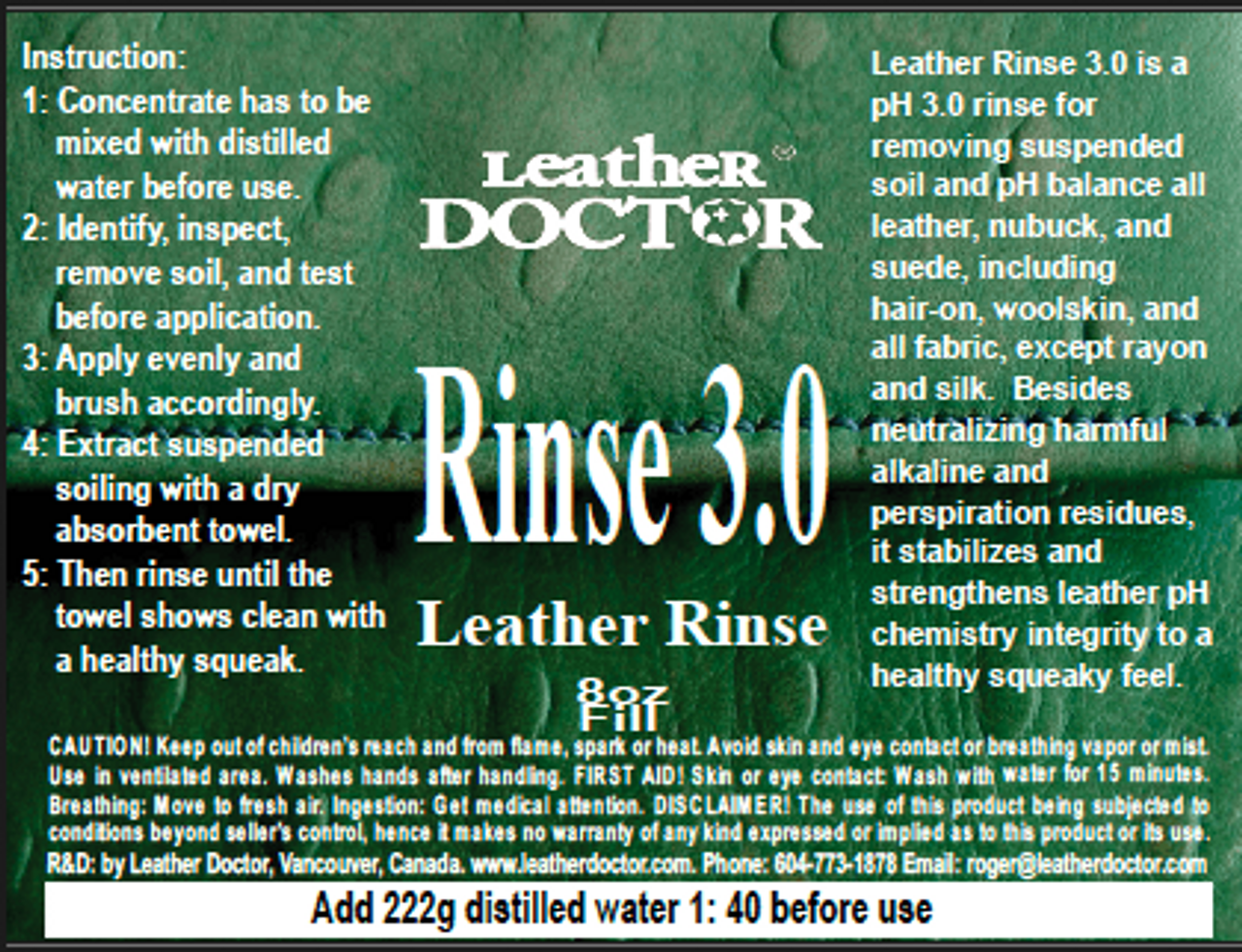 Leather Rinse 3.0 by Leather Doctor is a pH 3.0 leather-safe rinse formulated to remove suspended soil and restore the pH balance of leather, ensuring its structural integrity and long-term durability.
Leather Rinse 3.0 by Leather Doctor is a pH 3.0 leather-safe rinse formulated to remove suspended soil and restore the pH balance of leather, ensuring its structural integrity and long-term durability.
 Rinse 3.0 Key Features & Benefits:
Rinse 3.0 Key Features & Benefits:
 Removes Suspended Soil – Lifts and extracts emulsified soiling for a clean, residue-free finish.
Removes Suspended Soil – Lifts and extracts emulsified soiling for a clean, residue-free finish.
 Neutralizes Alkaline Residue – Restores pH balance to prevent damage from alkaline overexposure.
Neutralizes Alkaline Residue – Restores pH balance to prevent damage from alkaline overexposure.
 Prevents Tackiness & Dye Bleeding – Stabilizes the leather structure, reducing unwanted texture changes.
Prevents Tackiness & Dye Bleeding – Stabilizes the leather structure, reducing unwanted texture changes.
 Enhances Leather’s Ionic Charge – Recharges the leather with a positive (+ve) charge, improving its ability to bond with negatively (-ve) charged tanning agents, dyestuff, and fatliquor.
Enhances Leather’s Ionic Charge – Recharges the leather with a positive (+ve) charge, improving its ability to bond with negatively (-ve) charged tanning agents, dyestuff, and fatliquor.
 Preserves Suppleness & Durability – Helps maintain the leather’s softness, preventing stiffness and cracking.
Preserves Suppleness & Durability – Helps maintain the leather’s softness, preventing stiffness and cracking.
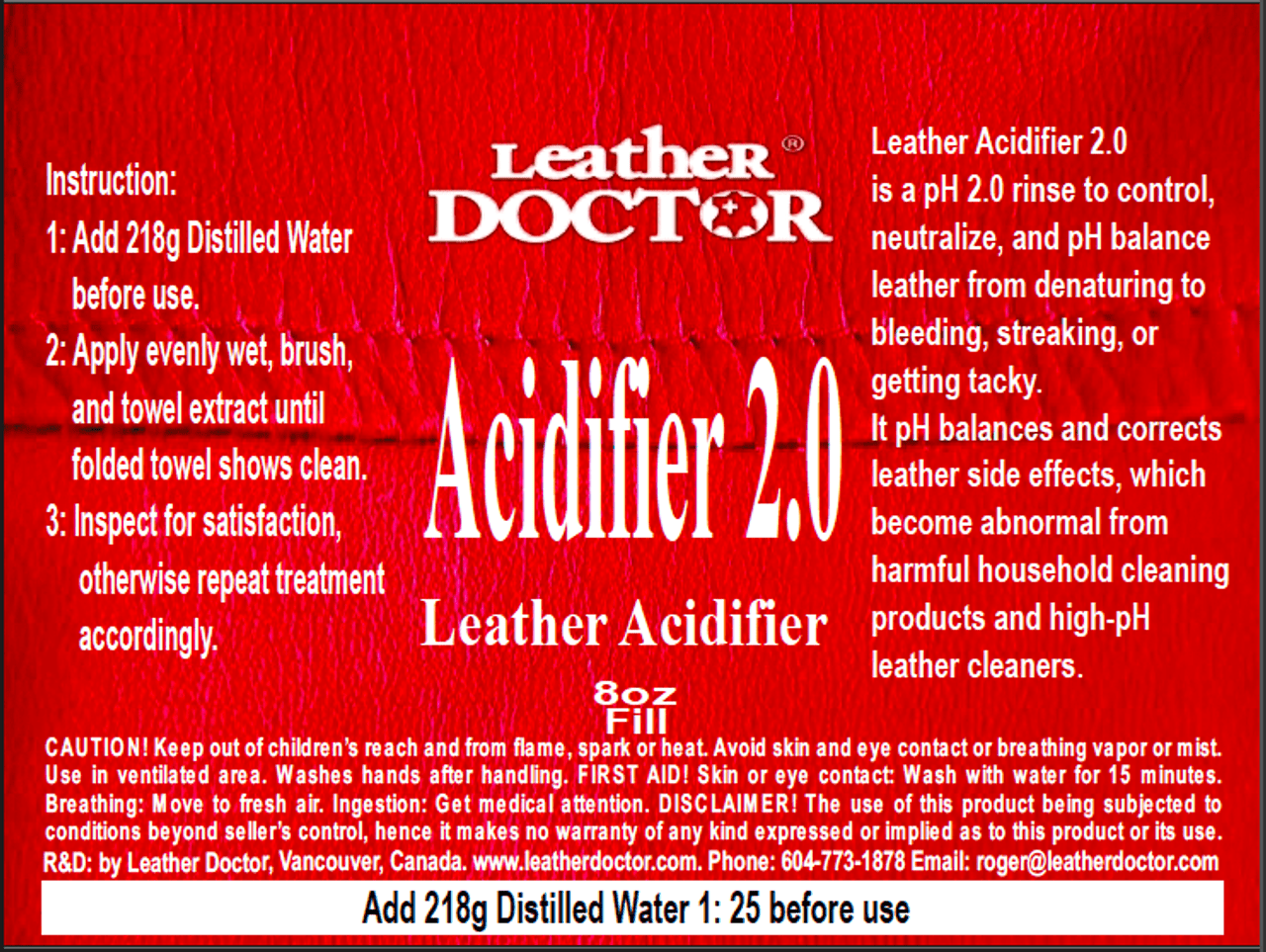 Leather Acidifier 2.0 by Leather Doctor® is a pH 2.0 acidic rinse designed to control, neutralize, and restore leather’s natural pH balance.
Leather Acidifier 2.0 by Leather Doctor® is a pH 2.0 acidic rinse designed to control, neutralize, and restore leather’s natural pH balance.
 Acidifier 2.0 prevents leather from denaturing, which can lead to bleeding, streaking, tackiness, and structural weakness due to alkaline overexposure.
Acidifier 2.0 prevents leather from denaturing, which can lead to bleeding, streaking, tackiness, and structural weakness due to alkaline overexposure.
 Acidifier 2.0 Key Benefits:
Acidifier 2.0 Key Benefits:
 Neutralizes alkaline contamination from cleaners, sweat, and body oils
Neutralizes alkaline contamination from cleaners, sweat, and body oils
 Prevents dye bleeding and color streaking
Prevents dye bleeding and color streaking
 Reduces leather tackiness and improves texture
Reduces leather tackiness and improves texture
 Strengthens leather fibers and enhances structural integrity
Strengthens leather fibers and enhances structural integrity
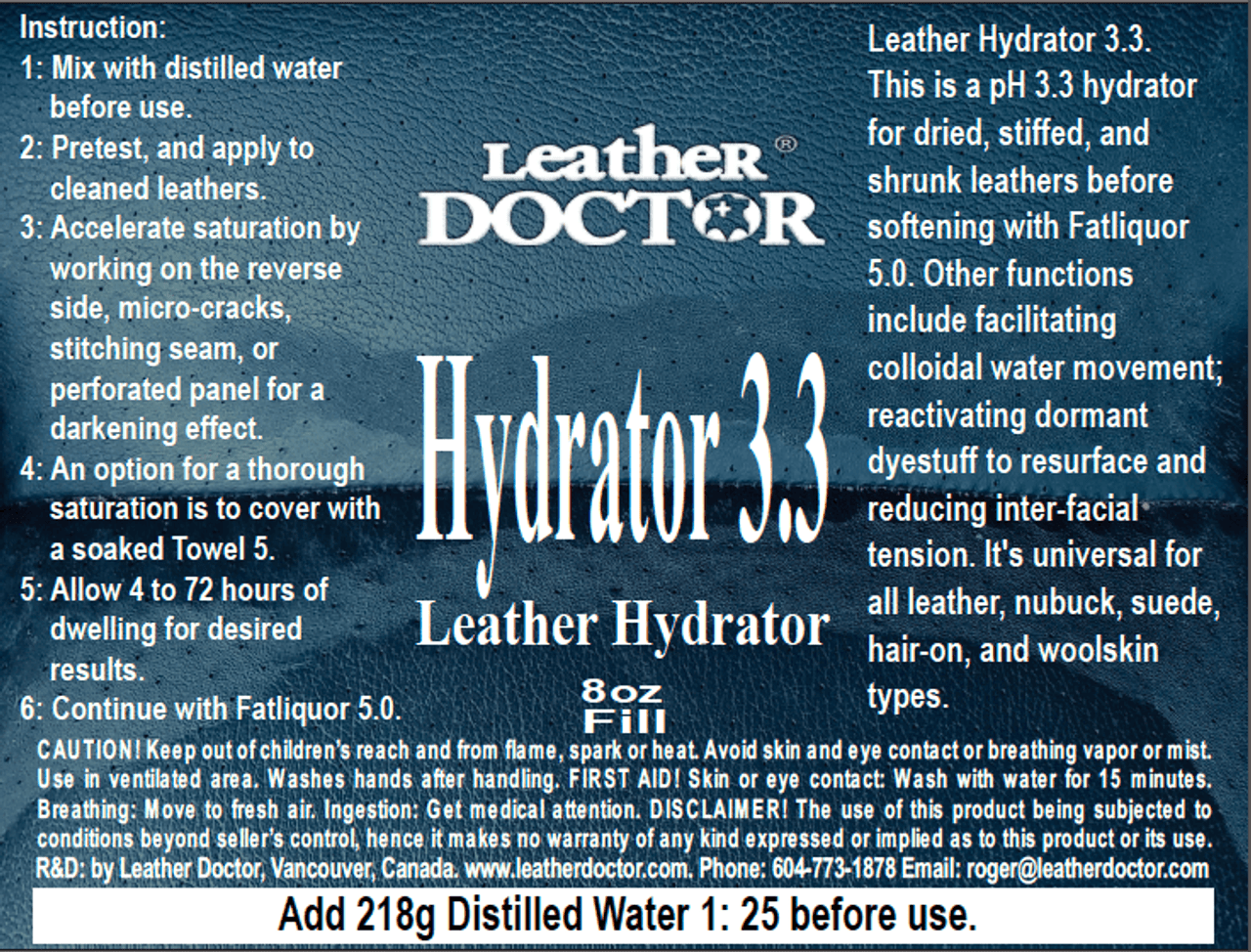 Leather Hydrator 3.3 is a leather-safe pH 3.3 aqueous solution formulated by Leather Doctor® to hydrate, relax, and restore the leather’s internal structure during cleaning, conditioning, and restoration processes - in line with its tannery science-based function:
Leather Hydrator 3.3 is a leather-safe pH 3.3 aqueous solution formulated by Leather Doctor® to hydrate, relax, and restore the leather’s internal structure during cleaning, conditioning, and restoration processes - in line with its tannery science-based function:
 It mimics the hydration stage of tannery pre-conditioning to prepare leather for deeper structural rejuvenation.
It mimics the hydration stage of tannery pre-conditioning to prepare leather for deeper structural rejuvenation.
 Hydrator 3.3 Key Benefits:
Hydrator 3.3 Key Benefits:
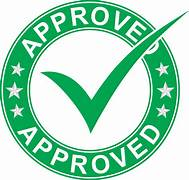 Rehydrates dried, stiff, or collapsed fiber structure
Rehydrates dried, stiff, or collapsed fiber structure
 Restores moisture to the leather’s protein fibers, relaxing them so they can regain flexibility.
Restores moisture to the leather’s protein fibers, relaxing them so they can regain flexibility.
 Essential before fatliquoring (with Leather Fatliquor 5.0) so fats and oils can penetrate deeply and bond properly.
Essential before fatliquoring (with Leather Fatliquor 5.0) so fats and oils can penetrate deeply and bond properly.
 Displaces and flushes out impurities
Displaces and flushes out impurities
 Helps suspend and wick out residual body oils, sweat, soiling, or alkaline contamination that may have penetrated the leather.
Helps suspend and wick out residual body oils, sweat, soiling, or alkaline contamination that may have penetrated the leather.
 Balances pH and readies leather for further treatments
Balances pH and readies leather for further treatments
 The mild acidic pH of 3.3 re-aligns the ionic charges of the leather structure, making it receptive to fatliquor and protecting against pH damage.
The mild acidic pH of 3.3 re-aligns the ionic charges of the leather structure, making it receptive to fatliquor and protecting against pH damage.
 Helps reduce stiffness and restore suppleness
Helps reduce stiffness and restore suppleness
 When used alone or in conjunction with fatliquor, Hydrator 3.3 is critical for achieving uniform softness, without patchiness.
When used alone or in conjunction with fatliquor, Hydrator 3.3 is critical for achieving uniform softness, without patchiness.
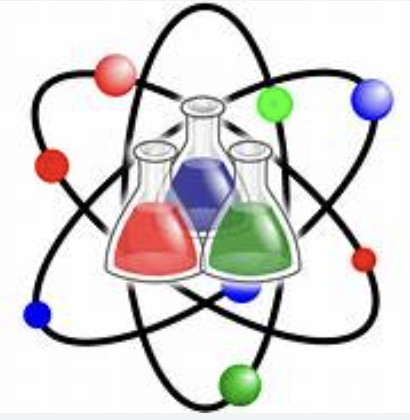 Tannery science basis
Tannery science basis
 In professional tanning and retanning, hides are hydrated before fatliquoring or coloring to ensure that treatments penetrate evenly and bond effectively.
In professional tanning and retanning, hides are hydrated before fatliquoring or coloring to ensure that treatments penetrate evenly and bond effectively.
 Hydrator 3.3 replicates this essential tannery hydration step at the restoration stage, particularly for dried-out, stiff, or aged leather.
Hydrator 3.3 replicates this essential tannery hydration step at the restoration stage, particularly for dried-out, stiff, or aged leather.
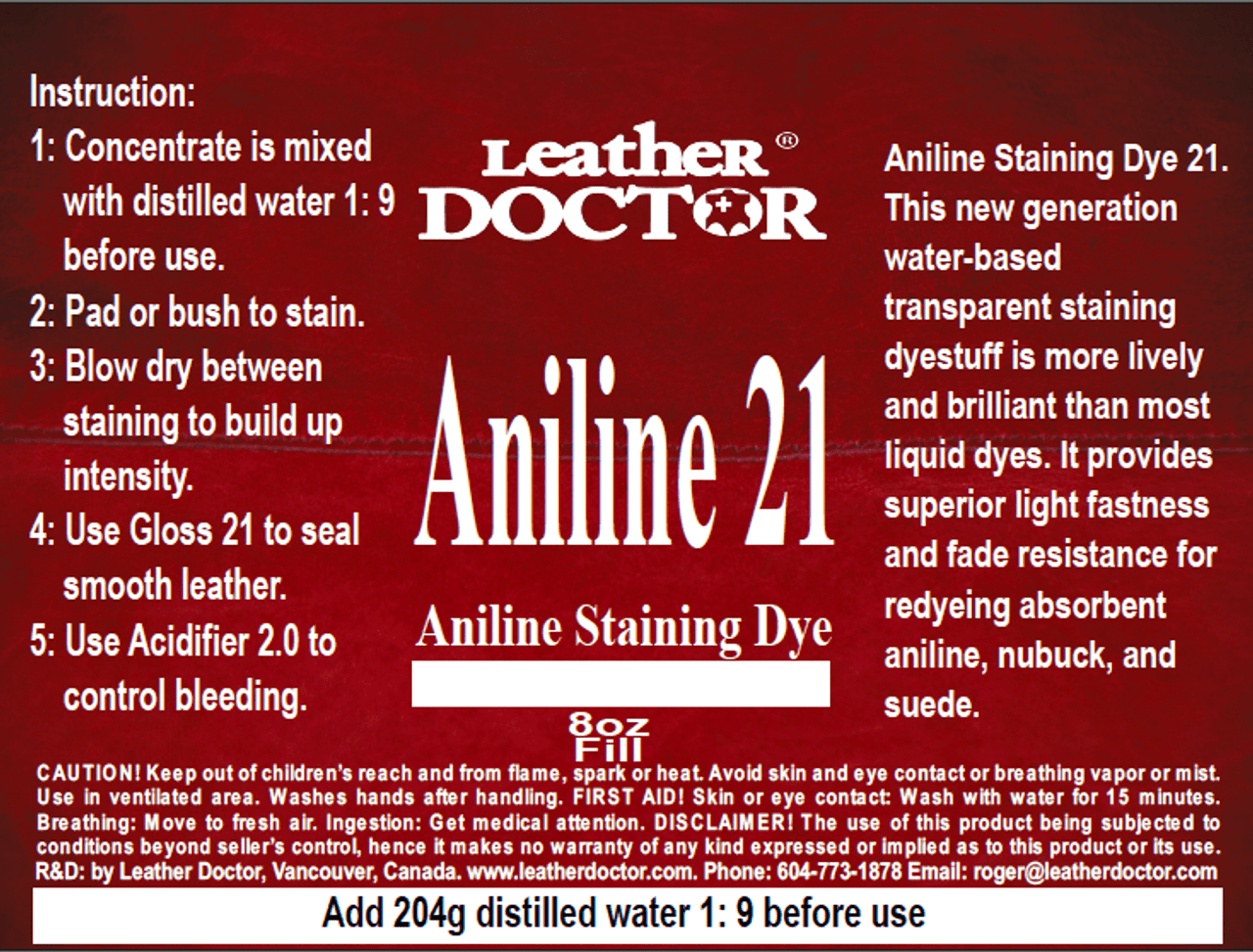 Aniline Staining Dye 21 by Leather Doctor® is a new-generation, water-based transparent staining dye based on tannery science principles designed specifically for absorbent aniline leathers.
Aniline Staining Dye 21 by Leather Doctor® is a new-generation, water-based transparent staining dye based on tannery science principles designed specifically for absorbent aniline leathers.
 Aniline 21 Key Features:
Aniline 21 Key Features:
 Transparent and brilliant staining effect:
Transparent and brilliant staining effect:
 Enhances the natural beauty, depth, and character of the leather grain or nap rather than concealing it.
Enhances the natural beauty, depth, and character of the leather grain or nap rather than concealing it.
 Lively, rich color:
Lively, rich color:
 Produces more vibrant and vivid results compared to most conventional liquid dyes.
Produces more vibrant and vivid results compared to most conventional liquid dyes.
 Superior lightfastness & fade resistance:
Superior lightfastness & fade resistance:
 Offers better UV stability and longer-lasting color than standard liquid dyes.
Offers better UV stability and longer-lasting color than standard liquid dyes.
 Water-based & leather-safe:
Water-based & leather-safe:
 Compatible with Leather Doctor’s tannery science-based care system, ensuring no harm to the leather’s structure or pH balance when used as directed.
Compatible with Leather Doctor’s tannery science-based care system, ensuring no harm to the leather’s structure or pH balance when used as directed.
 Flexible color shading:
Flexible color shading:
 Can be diluted with distilled water or Leather Hydrator 3.3 for lighter, custom color shades.
Can be diluted with distilled water or Leather Hydrator 3.3 for lighter, custom color shades.
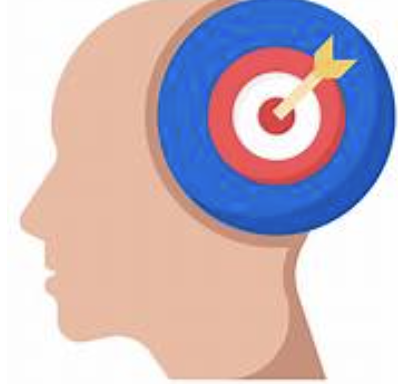 Purpose
Purpose
 Aniline Staining Dye 21 is formulated for:
Aniline Staining Dye 21 is formulated for:
 Re-dyeing faded aniline leathers
Re-dyeing faded aniline leathers
 Reviving color on nubuck and suede
Reviving color on nubuck and suede
 Creating uniform or shaded effects while allowing natural markings and grain to remain visible
Creating uniform or shaded effects while allowing natural markings and grain to remain visible
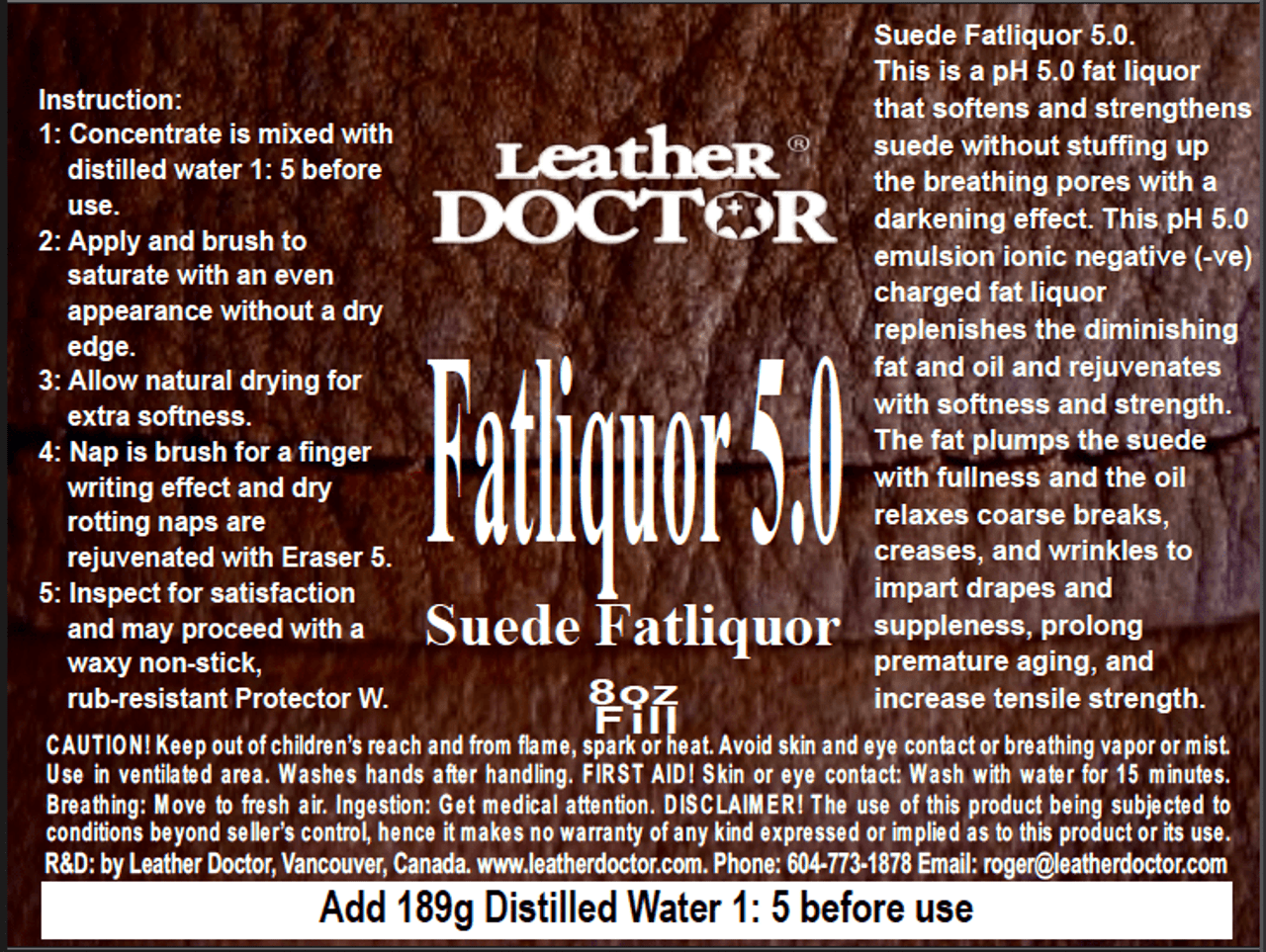 Leather Fatliquor 5.0 by Leather Doctor® is a leather-safe pH 5.0 emulsion of fat, oil, and water designed to replenish the original fatliquor content of leather’s fibrous structure.
Leather Fatliquor 5.0 by Leather Doctor® is a leather-safe pH 5.0 emulsion of fat, oil, and water designed to replenish the original fatliquor content of leather’s fibrous structure.
 It restores leather’s internal lubrication, flexibility, strength, and resilience—mimicking the essential fatliquoring stage in professional tanning and retanning processes.
It restores leather’s internal lubrication, flexibility, strength, and resilience—mimicking the essential fatliquoring stage in professional tanning and retanning processes.
 Fatliquor 5.0 Key Benefits:
Fatliquor 5.0 Key Benefits:
 Lubricates and nourishes the leather structure
Lubricates and nourishes the leather structure
 Fatliquor 5.0 deposits fat and oil molecules that bond to the amphoteric protein fibers.
Fatliquor 5.0 deposits fat and oil molecules that bond to the amphoteric protein fibers.
 These lubricate the fibrils, allowing them to slide over each other without stiffness, brittleness, or cracking.
These lubricate the fibrils, allowing them to slide over each other without stiffness, brittleness, or cracking.
 Reinforces tensile strength and elasticity
Reinforces tensile strength and elasticity
 Proper fatliquoring prevents fiber embrittlement and maintains leather’s natural strength and softness.
Proper fatliquoring prevents fiber embrittlement and maintains leather’s natural strength and softness.
 Restores suppleness and prevents future damage
Restores suppleness and prevents future damage
 Leather loses fatliquor over time due to aging, heat, sunlight, alkaline exposure, or cleaning.
Leather loses fatliquor over time due to aging, heat, sunlight, alkaline exposure, or cleaning.
 Replenishing it prevents shrinkage, stiffness, and cracks.
Replenishing it prevents shrinkage, stiffness, and cracks.
 Provides long-term structural protection
Provides long-term structural protection
 Maintains leather’s dimensional stability and ability to flex without damage.
Maintains leather’s dimensional stability and ability to flex without damage.
 Tannery science basis:
Tannery science basis:
 In the tannery, fatliquoring is one of the final and most critical stages after tanning and dyeing.
In the tannery, fatliquoring is one of the final and most critical stages after tanning and dyeing.
 It ensures that leather stays soft, strong, and flexible as it dries.
It ensures that leather stays soft, strong, and flexible as it dries.
 The fats and oils form a molecular film around the protein fibers, acting as internal lubricants.
The fats and oils form a molecular film around the protein fibers, acting as internal lubricants.
 Leather Fatliquor 5.0 brings this same process to leather restoration.
Leather Fatliquor 5.0 brings this same process to leather restoration.
 It ensures the leather is not just “looking good on the surface” but structurally rejuvenated from within.
It ensures the leather is not just “looking good on the surface” but structurally rejuvenated from within.
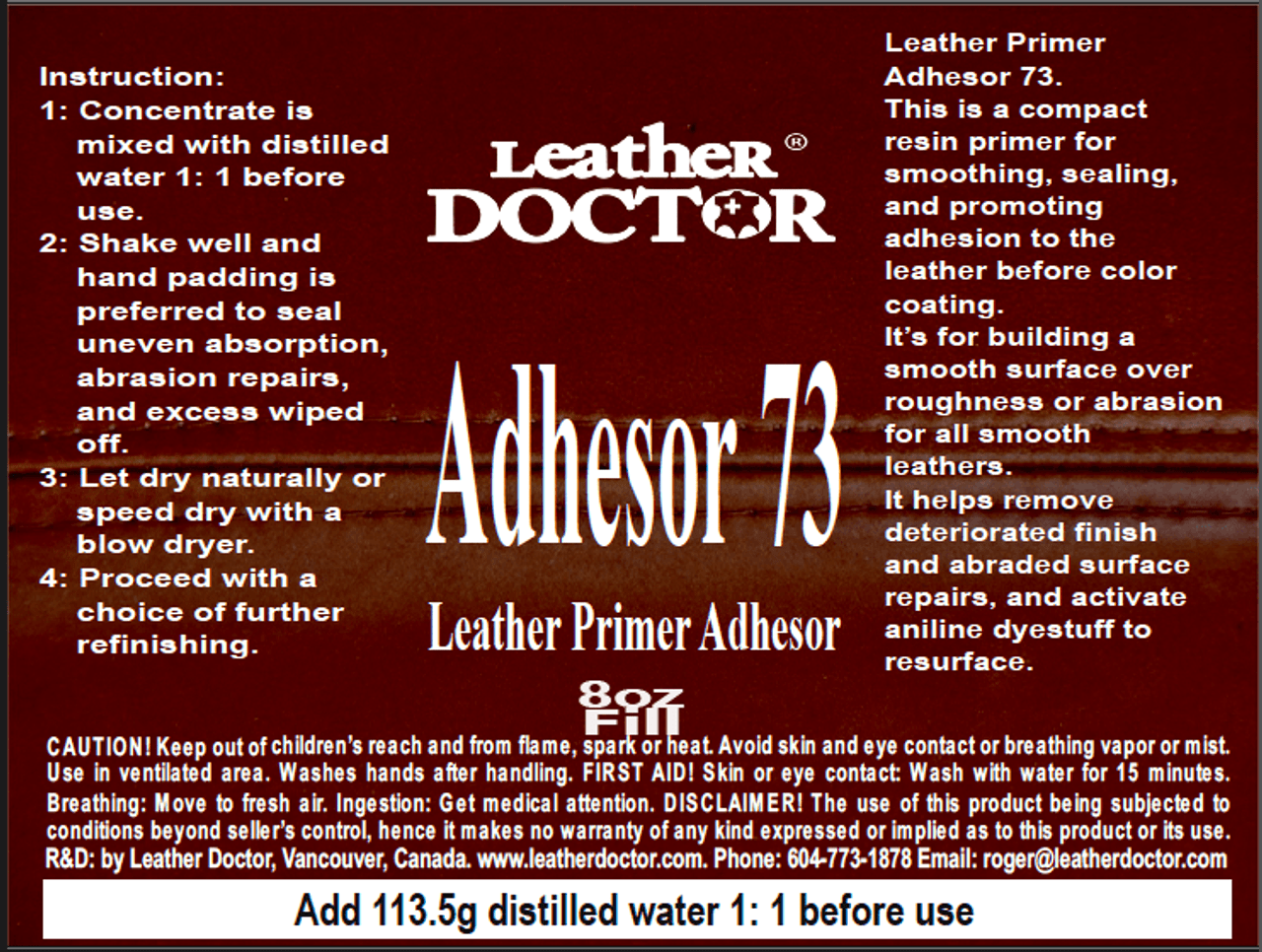 Leather Primer Adhesor 73 by Leather Doctor® is a compact resin primer designed to smooth, seal, and enhance adhesion before color coating.
Leather Primer Adhesor 73 by Leather Doctor® is a compact resin primer designed to smooth, seal, and enhance adhesion before color coating.
 Adhesor 73 is formulated and designed to:
Adhesor 73 is formulated and designed to:
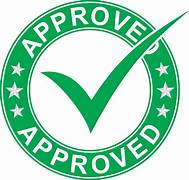 Smooth and seal leather surfaces.
Smooth and seal leather surfaces.
 Enhance adhesion for color coating.
Enhance adhesion for color coating.
 Build uniform surfaces over rough or abraded areas.
Build uniform surfaces over rough or abraded areas.
 Assist in removing deteriorated finishes.
Assist in removing deteriorated finishes.
 Reactivate aniline dyestuff to some extent.
Reactivate aniline dyestuff to some extent.
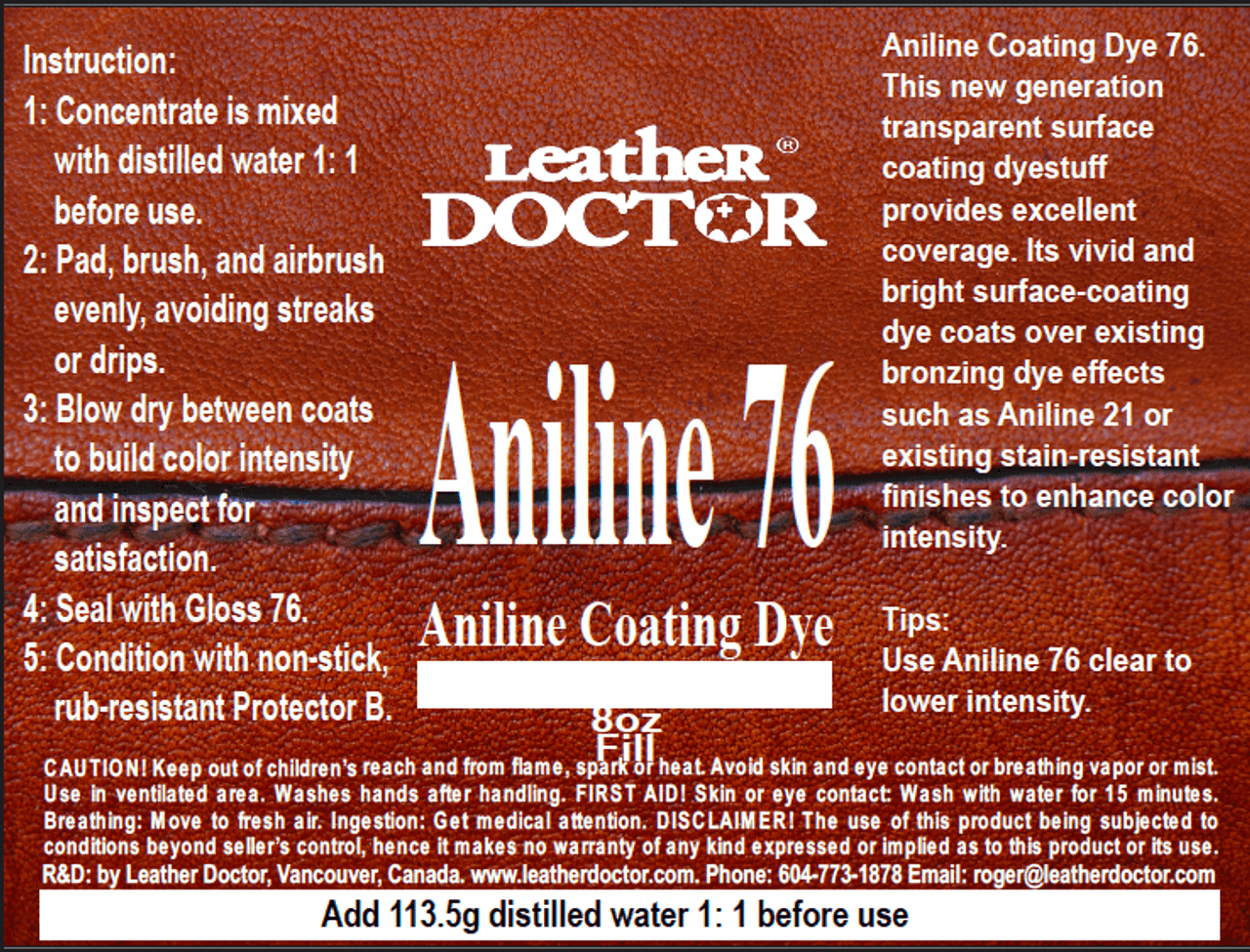 Aniline Gloss Coating Dye 76 by Leather Doctor® is a next-generation transparent surface coating dye designed for vivid, bright color coverage.
Aniline Gloss Coating Dye 76 by Leather Doctor® is a next-generation transparent surface coating dye designed for vivid, bright color coverage.
 Unlike traditional dyes that penetrate leather, this dye forms a surface coating, delivering enhanced color intensity and uniformity. It's especially effective when applied over bronzing-stained dye effects like Aniline 21, or over existing finishes to revitalize and enrich leather surfaces.
Unlike traditional dyes that penetrate leather, this dye forms a surface coating, delivering enhanced color intensity and uniformity. It's especially effective when applied over bronzing-stained dye effects like Aniline 21, or over existing finishes to revitalize and enrich leather surfaces.
 How Does Aniline 76 Work?
How Does Aniline 76 Work?
 Layered Transparency
Layered Transparency
 Like watercolor painting, color intensity builds up with each layer. The more layers, the deeper the color.
Like watercolor painting, color intensity builds up with each layer. The more layers, the deeper the color.
 Overlapping Strokes
Overlapping Strokes
 Applying strokes on top of each other increases color depth, enabling shading and visual richness.
Applying strokes on top of each other increases color depth, enabling shading and visual richness.
 Diluting for Lighter Shades
Diluting for Lighter Shades
 To achieve a lighter or more subtle tone, dilute the original dye with the 'Clear' component.
To achieve a lighter or more subtle tone, dilute the original dye with the 'Clear' component.
 Always Test First
Always Test First
 Conduct a color test before full application to confirm the desired outcome.
Conduct a color test before full application to confirm the desired outcome.
 Test Application Method
Test Application Method
 Different tools and methods can yield varied results. Always test your application approach beforehand.
Different tools and methods can yield varied results. Always test your application approach beforehand.
 Recommended Tool: Airbrush
Recommended Tool: Airbrush
 For best consistency, use an airbrush with 80 to 100 psi pressure.
For best consistency, use an airbrush with 80 to 100 psi pressure.
 Other Methods
Other Methods
 Varnishing brushes or folded towels can also be used but may produce more artistic or varied results.
Varnishing brushes or folded towels can also be used but may produce more artistic or varied results.
 Two Shading Techniques
Two Shading Techniques
 Method 1: Airbrush
Method 1: Airbrush
 Apply fine, even coats with a Paasche airbrush for a smooth, professional finish.
Apply fine, even coats with a Paasche airbrush for a smooth, professional finish.
 Method 2: Hand Brushing or Padding
Method 2: Hand Brushing or Padding
 Use brushes or padding for a “salvage” look, emphasizing artistic or antique-style shading.
Use brushes or padding for a “salvage” look, emphasizing artistic or antique-style shading.
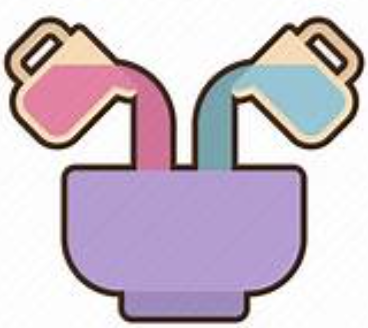 Pre-Mixing with ‘Clear’
Pre-Mixing with ‘Clear’
 Mix with 'Clear' before application to control the starting intensity.
Mix with 'Clear' before application to control the starting intensity.
 Depending on the tool used, the finish can range from clean and uniform to uniquely shaded.
Depending on the tool used, the finish can range from clean and uniform to uniquely shaded.
Aniline Leather Glossy Dyeing Kit A7.cl by Leather Doctor® is a professional system designed to restore and refinish aniline leathers, bringing them back to life with renewed color vibrancy, a rich glossy appearance, and luxurious softness.
Aniline Finish Topcoat Gloss 76 by Leather Doctor® is a premium water-based topcoat designed to seal and protect all gloss aniline leathers.
It prevents color crocking and bleeding while enhancing the leather's appearance with a clear, gloss finish.
Gloss 76 features: Gloss Protective Topcoat for Aniline Leathers
Heavy-Duty Protection – Formulated for maximum toughness and flexibility.
Crystal-Clear Gloss – Fine particulate urethane-resin emulsion delivers a sleek, glossy finish.
Versatile Use – Perfect for upholstery, handbags, garments, and boots.
Customizable Durability – Boost water resistance and resolve tackiness by adding Crosslinker 64 at a 1:95 weight ratio.
Recommended Add-On:
Crosslinker 64 (Sold separately) – Enhances topcoat performance and longevity.
Pro Tips:
For Conditioning:
Apply Protector B after the topcoat cures to impart a non-stick, rub-resistant finish with a buttery-soft tactile feel.
For Scent Enhancement:
Use Protector B Plus to add a charming, classic leather scent that elevates the sensory experience.
Sandpaper 2000 grit is recommended to remove refinishing streaks for in between coatings.
Step-by-Step Application Guide
What is a Glossy Aniline Leather?

How to Identify Glossy Aniline Leather?

How to Use this Aniline Leather Problem-Solving Matrix?
Soil,
Stain,
Odor,
Structure, and
Finish (listed in the left column).
For example:
The process should always conclude with:
Technical Help and Support?
Your opinions, insights and review are precious and will help us to improve our writing and solve your leather problem more efficiently.
